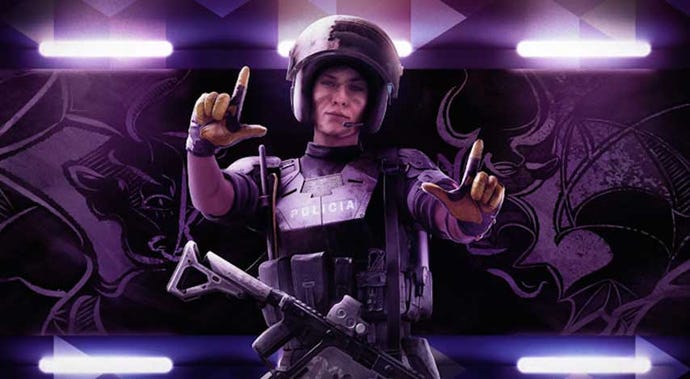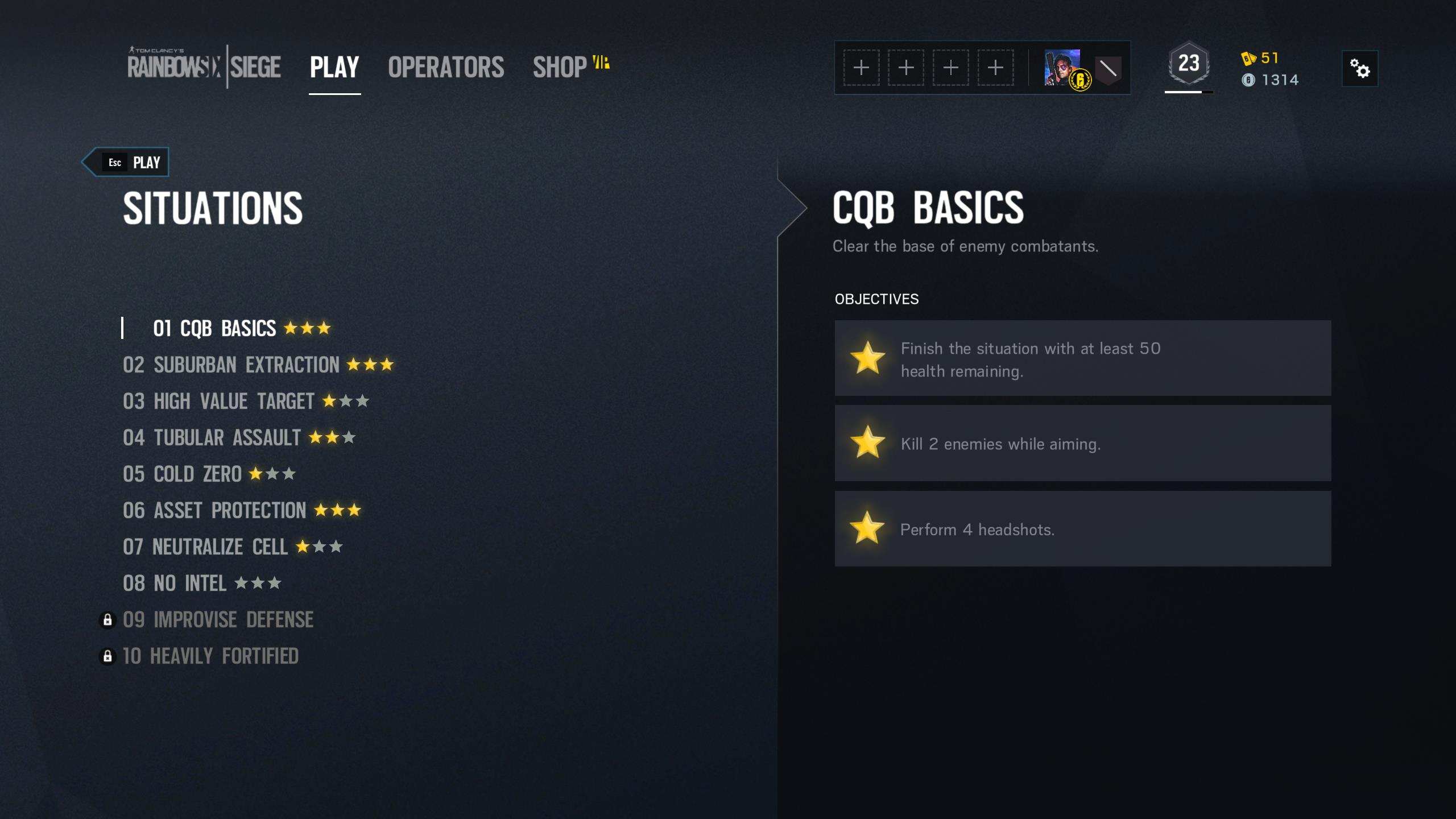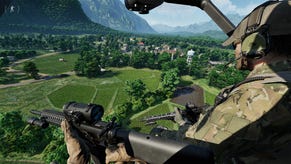Rainbow Six Siege hates new players
Rainbow Six Siege is one of the most punishing and inaccessible shooters available today. A big part of that is very much by design, but the game makes little effort to rope in new players.
My relationship with Rainbow Six Siege has more or less followed a certain cadence since I first started playing in 2015. Towards the end of the year, I find myself itching for Siege’s unique brand of tactical combat, so I install it and begin a journey of discovery that usually doesn’t last long.
After spending a few days playing, I realise I am not actually competent enough to do anything of value in multiplayer, so I instead turn to a bit of Terrorist Hunt before dropping the game shortly after, only to pick it up again the following year and repeat the cycle.
I wanted to keep the tradition alive, so I tried jumping in again during the holiday break recently but was faced with a problem. This is the first time I decided to explore operators (classes) beyond what was available in the base game I own, but as I'd later realise, I was very late to the party.
By December 2017, Siege had received two full years worth of DLC, with eight operators per year. Knowing which year an operator is part of is necessary in deciding which season pass to get. My first task was figuring out a way to get the season passes for both years (so I can have a full roster) without breaking the bank. Unfortunately, there wasn’t any way to do that.
Even in December 2017, the season pass for the 2016 content was still priced $30. This was also the case for the 2017 season pass. Unfortunately, only the 2017 pass was available for sale on Steam and Uplay. Still, I needed every operator available, but I couldn’t easily find the Year 1 pass online because Ubisoft doesn’t sell a year’s season pass after it ends.
This is just one of a dozen puzzling quirks I learned. Assuming I could find both passes, I would have paid $60 – the price of a full game. I didn’t want to give up, so I decided to seek other ways of buying the content.
Rainbow Six Siege allows you to use the in-game currency (Renown) to buy DLC operators without spending real money. But that is not conceivable for anyone who doesn’t play the game 24/7. The price of a single DLC operator is 25,000 Renown. Without any boosts, it’ll take you around a week of playing Ranked to barely have enough for one.
This is so incredibly prohibitive, you’d be forgiven for thinking Siege was a free-to-play game. It isn't, of course, but Ubisoft sees those who only own the base game the same way King views the millions who play Candy Crush without paying a dime.
I don’t have time to grind for one operator, and I definitely can’t grind for 16 of them. Stumped, I trawled Google for an answer. Turns out, I wasn’t the only one looking to get into Siege in late 2017. Helpful Reddit users suggested I buy the Year One operators bundle off the in-game store, and get the Year Two pass from a retailer or through Uplay. The bundle in question sells for 2,400 R6 Credits, the paid-for currency, which translates to $20.
That would bring the total down to $50. Although cheaper, it still wasn't ideal. All of this information is crucial, but it's nowhere to be seen on official channels, hence why I looked to forums for an answer. So, after considering all options I realised that the game’s most expensive version would actually be the most straightforward, hassle-free way of getting all content up to that point. It's called The Complete Edition, and it costs $90. It does include the base game, but forfeiting my existing copy was ultimately the way to go.
The same forum users recommending this version also suggested I wait for a sale. A couple of days later, I saw it for $48 and my goal was achieved. I now own all existing operators.
If you think this is convoluted and strangely not consumer friendly, wait until you hear about Siege’s Starter Edition. I never actually considered Starter because I already had the base game, but I decided to look into it to see what's up with it.
Priced $15, it gives you access to four operators. In theory, this is the version that provides the lowest barrier to entry. In practice, you’d be mad to buy it knowing what you’re in for. Because of its low price, Ubisoft turned the grind up several notches. The cost of unlocking a single, non-DLC operator in the base version is 500-2,000 Renown. The same operator would cost Starter Edition owners 12,500 - over six times more.
Season passes for Year One and Two are compatible with the Starter Edition, but it’s the grind to unlock launch operators that shows how much of a bad deal it is. You can’t upgrade to Standard for a cheaper price like you'd expect, and if you try to buy the legacy (launch) operators bundle off the in-game store, you’ll end up paying $50 ($15+$35) instead of $40 for the base version.
If you decide not to do this and just get a new copy - with the base version being the cheapest at $40 - you’ll be asked to spend even more. You’ve essentially paid $15 for a trial, because anyone who likes the game enough will automatically want to – at the very least – own launch operators.
As a bonus, if you bought the Starter on Steam, you’ll need to contact Steam support and ask for it to be removed from your account before you can buy any of the other editions.
Rainbow Six Siege is often lumped together with Overwatch as examples of a “fair” and “player-friendly” approach to the games-as-a-service model. You’ll often get ardent defenders shouting, “but free maps!” every time you try to argue that the two games are nothing alike. This has always puzzled me, because Siege’s business model is neither fair nor player friendly.
If someone picks up Overwatch today, they’ll have access to all heroes and all maps from the first moment they launch the game. Like Overwatch, heroes – or operators in this case – are the thing that keeps the Siege meta evolving. New operators are the content season passes exist to sell, not the maps. Giving away the maps for free - and there aren’t that many per year – doesn’t change the fact that this model splits the community.
The whole point of this setup to begin with was a desire not to split the player base between haves and have nots, but this is exactly what’s happening here.
You won’t get kicked from a match when a DLC map comes up like in Call of Duty, but good luck pulling off any of the many moves the community relies on that require DLC operators. And because each operator can only be picked by one player in a match, someone could easily pick the only useful operator you had for the job before you do, leaving you with a less-than-ideal pick.
And to top it all off, the in-game store is full of microtransactions-based items. They’re not blind boxes, thankfully, but their prices are so high and inconsistently applied they may as well be. They're only cosmetic, sure, but I shouldn't have to put up with these on top of the base price, and season passes. The "it's only cosmetic" line works with Overwatch because that's the game's only means of monetisation post-launch, Siege has two.
If you're not actively playing Siege, playing catch-up at the end of the year will be a frustrating and expensive process. This has always been true, and it gets more challenging every year.
Someone looking to get into Siege today need only look at the game’s Steam page. They’ll be greeted with four different versions. The Starter ($15), Standard ($40), Year Two Gold ($70), and the Complete Edition for $90. I fully expect another one to be added at the end of 2018, when the rest of Season 3 will have concluded.
By comparison, Street Fighter 5: Arcade Edition's page lists exactly what's included in each version, and has all season passes on sale in the DLC section. I don't play Street Fighter really, but if I were to buy it today, I would instantly know that I need to buy the Season Three pass alongside Arcade to own all characters. This page is also great because you can see that older content is cheaper, so the value of everything becomes immediately apparent.
It helps a lapsed player more easily get back into it, thanks to the cheaper season pass price, and simplifies the process for a new player unsure what to get.
How exactly is a new player supposed to know the best Siege version they should go for? We’ve already established that the $15 one seems like a scam, but not everyone is going to know that. Even the various editions' description is misleading. To someone new to the game, some of the perks of getting a season pass like early access, and the VIP membership will be of little to no benefit.
And beyond that, someone interested in Siege shouldn't have to read up on what the different years signify, or wonder about the contents of each version. No other game today demands this. In games with a similar reliance on heroes, older content either becomes part of the base version or gets heavily discounted.
It’s inconceivable how anyone can look at this and see a fair or simple system, let alone one that encourages enough new players to jump in and help the game grow every year.
And these are just the monetisation problems, Siege's gameplay creates design problems worth talking about.
Siege doesn’t offer newcomers any help. The list of Situations – pre-made scenarios designed around an operator’s unique skills and gadgets – has not been updated since launch. The tutorial menu, which has three (!) videos, hasn’t been touched since 2015, and Ubisoft didn’t even bother to release new CG videos for any of the DLC operators.
For a game that demands map knowledge and proficiency with a wide variety of classes, Siege has zero ways for you to replicate the experience of a multiplayer match on your own terms. You can't host a bot match, so the only way to try out an operator - beyond live games - is to jump into a few Terrorist Hunt rounds as a lone wolf. Terror Hunt is an incredibly poor representation of multiplayer, and only serves as a fun co-op distraction, not a training ground.
Operators go against other operators in multiplayer, that's why they're split between defenders and attackers. For anyone to truly understand what this dynamic means, and a dozen other sub-systems, they'll need to see them in action, and you certainly can't do this in Terror Hunt. Your only path is jumping in at the deep end.
Siege is a swiftly punishing game, and deciding what you did wrong is not easy to do for new players.
As a lapsed player, I was having to juggle trying to learn the map, fill the role my teammates expect of me, and understand how to play my damn operator all in the span of a few minutes.
Even a game as demanding as PUBG has its quiet moments that help ease you in a little bit. Yes, you won’t get good at shooting until you make it a point to engage everyone you see for a while, but at least you’ll know how to hide and loot.
There’s no time to do anything in a Siege match but play your role. The pre-round phase is when everyone is busy barricading doors and picking angles to watch. That phase is only a few seconds-long, and before you know it, the action phase will kick off and you’ll be expected to be on your s**t for all of it. Nobody has time to walk you through the mechanics of Siege in-match.
Though I have been really fortunate to play with a group of very patient and understanding friends, I always felt like a burden. An attack can come from anywhere in Siege. Wooden walls, ceilings and floors only really provide temporary cover. An even thinner wall can be shot through with ease. I died multiple times to an enemy who successfully deduced my location by watching the corners I wasn’t in.
All that was left for them to do was shoot through a certain wall and proceed to damage and kill a target they did not see. The first time this happens to you will truly test your commitment to getting better, because it’s at this moment you realise you’ll have to also learn to recognise these spots along with everything else.
It’s not impossible, of course, as Siege’s player numbers show, but it’s absolutely not for someone who dips their toes in every so often. There’s always a baseline you lean on when you go back to an old shooter. Whether it be your existing knowledge of mechanics or aim skills, you won’t be going in completely blind. It’ll take a lot longer to be able to do the same for Siege.
If you're unable to commit the necessary time to get better at Siege every time you return, you'll never escape that rut. It gets harder every year with new operators and an ever-shifting meta. I will never be that player, but there has to be something more for me to do other than Terror Hunt.
I don’t expect to be great at Dota 2 or any other complex game the moment I start playing, but at least those games have tutorials, or modes outside of the main event designed to ease you in.
This isn’t a knock against Siege’s gameplay itself, rather a criticism of the game's onboarding experience. If it were any other game, I would've simply dropped it and moved on. I like Siege, or rather the concept of Siege. But, as I continue to be terrible at it, I have to wonder how anyone has a chance of going anywhere after picking it up in 2018.













